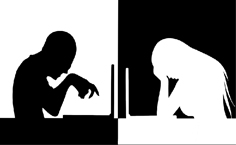Metal Artifact Reduction for Orthopedic Implants (O-MAR): Usefulness in CT Evaluation of Reverse Total Shoulder Arthroplasty
Fuente
Este artículo es originalmente publicado en:
De:
2017 Aug 10:1-7. doi: 10.2214/AJR.16.17684. [Epub ahead of print]
Todos los derechos reservados para:
Copyright © 2013-2016, American Roentgen Ray Society, ARRS, All Rights Reserved.
Abstract
OBJECTIVE:
The objective of this study is to evaluate the effect of the metal artifact reduction algorithm for orthopedic implants (O-MAR) on CT image quality for patients with reverse total shoulder arthroplasty (RTSA), with emphasis placed on the evaluation of bone in the vicinity of prostheses.
CONCLUSION:
The use of O-MAR improved CT image quality for patients with RTSA in the aspect of metal artifact reduction and soft-tissue profile. However, O-MAR tends to degrade depiction of the bone trabeculae and bone cortex and generate new artifacts, including a pseudocemented appearance and scapular pseudonotching.
KEYWORDS:
CT; arthroplasty; metal artifact; prosthesis; shoulder
Resumen
OBJETIVO:
El objetivo de este estudio es evaluar el efecto del algoritmo de reducción de artefactos metálicos para implantes ortopédicos (O-MAR) en la calidad de la imagen de TC para pacientes con artroplastia total reversa de hombro (RTSA), con énfasis en la evaluación del hueso en la vecindad de la prótesis.
CONCLUSIÓN:
El uso de O-MAR mejoró la calidad de imagen de CT para pacientes con RTSA en el aspecto de la reducción de artefacto metálico y el perfil de tejido blando. Sin embargo, O-MAR tiende a degradar la representación de las trabéculas óseas y corteza ósea y generar nuevos artefactos, incluyendo una apariencia pseudo cementado y pseudo esmerilado escapular.
El uso de O-MAR mejoró la calidad de imagen de CT para pacientes con RTSA en el aspecto de la reducción de artefacto metálico y el perfil de tejido blando. Sin embargo, O-MAR tiende a degradar la representación de las trabéculas óseas y corteza ósea y generar nuevos artefactos, incluyendo una apariencia pseudo cementado y pseudo esmerilado escapular.
PALABRAS CLAVE:
CT; Artroplastia; Artefacto de metal; prótesis; hombro
CT; Artroplastia; Artefacto de metal; prótesis; hombro
PMID: 28796543 DOI:





